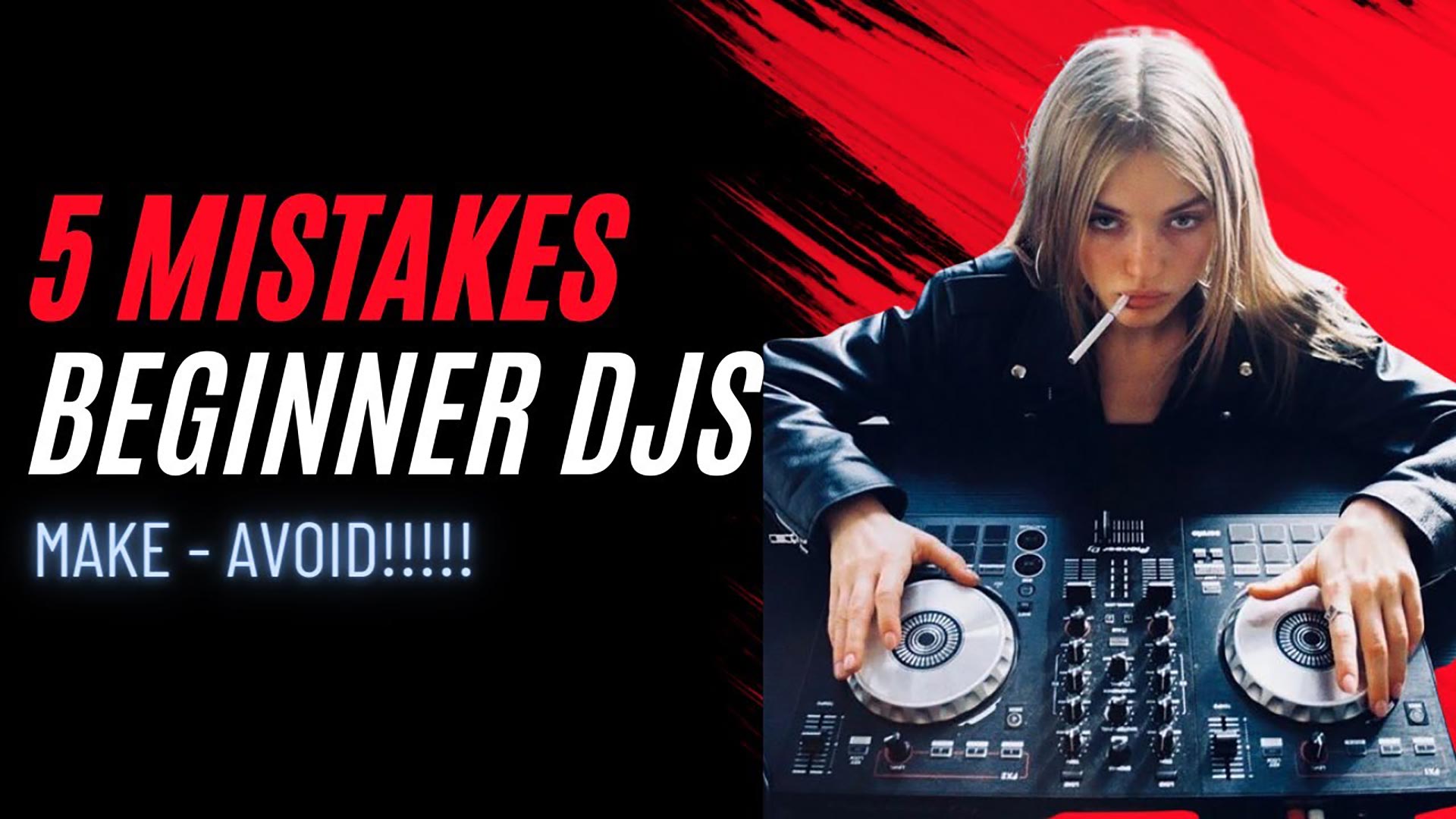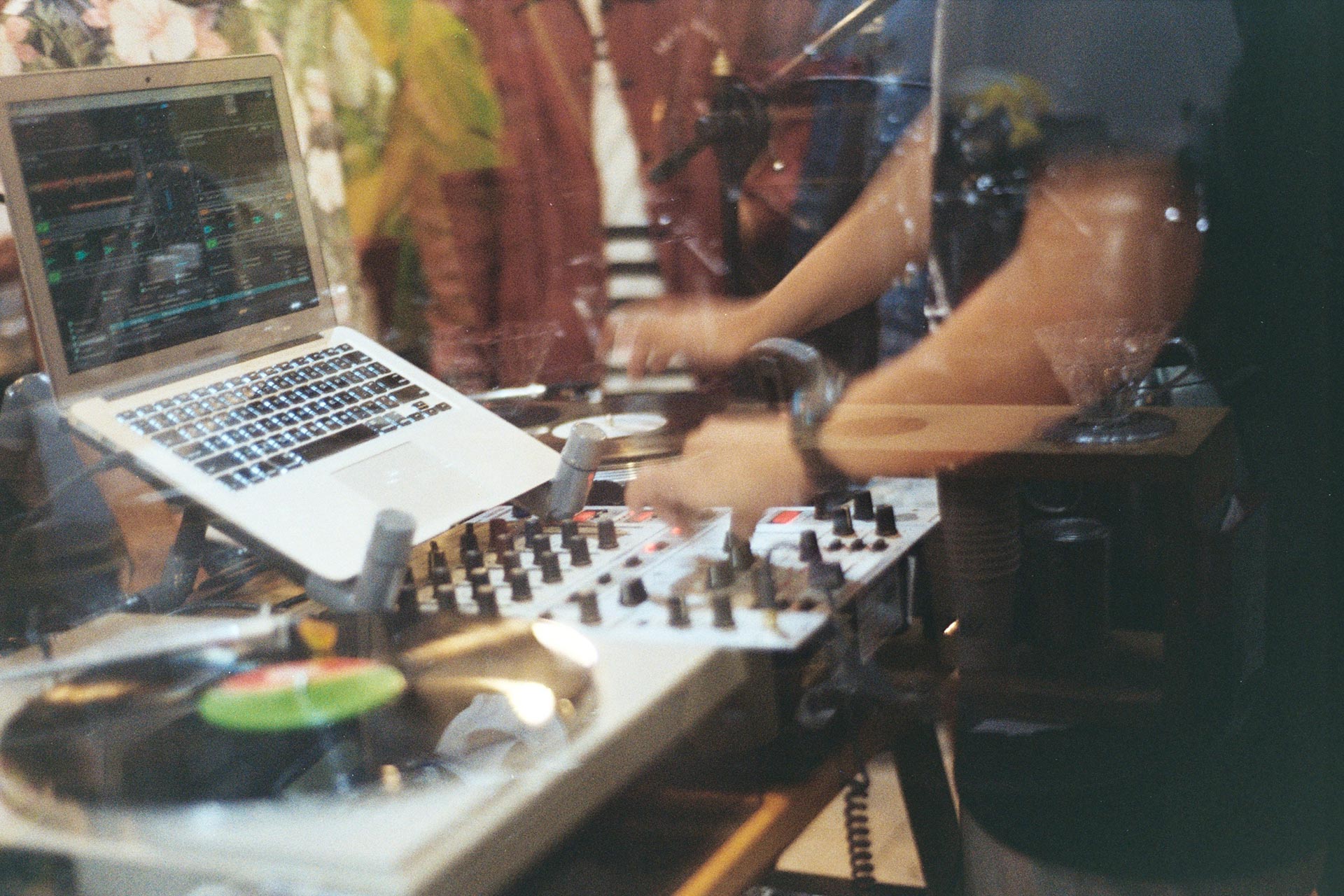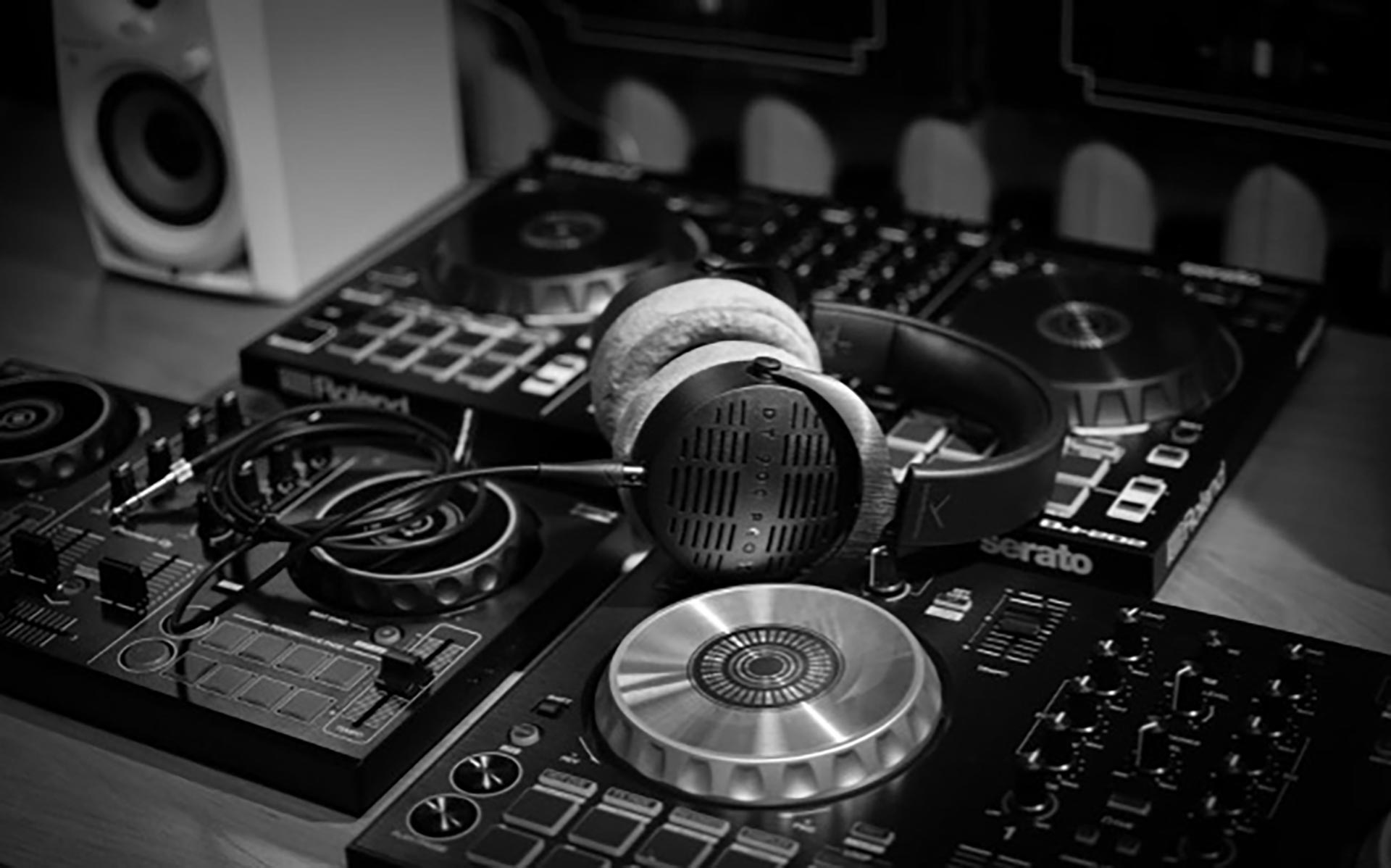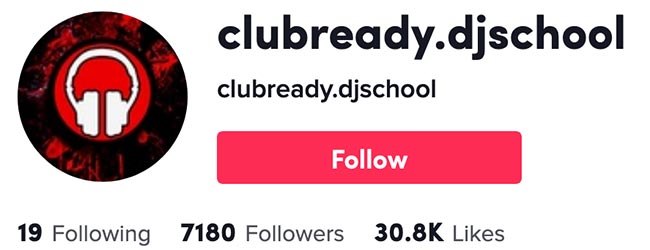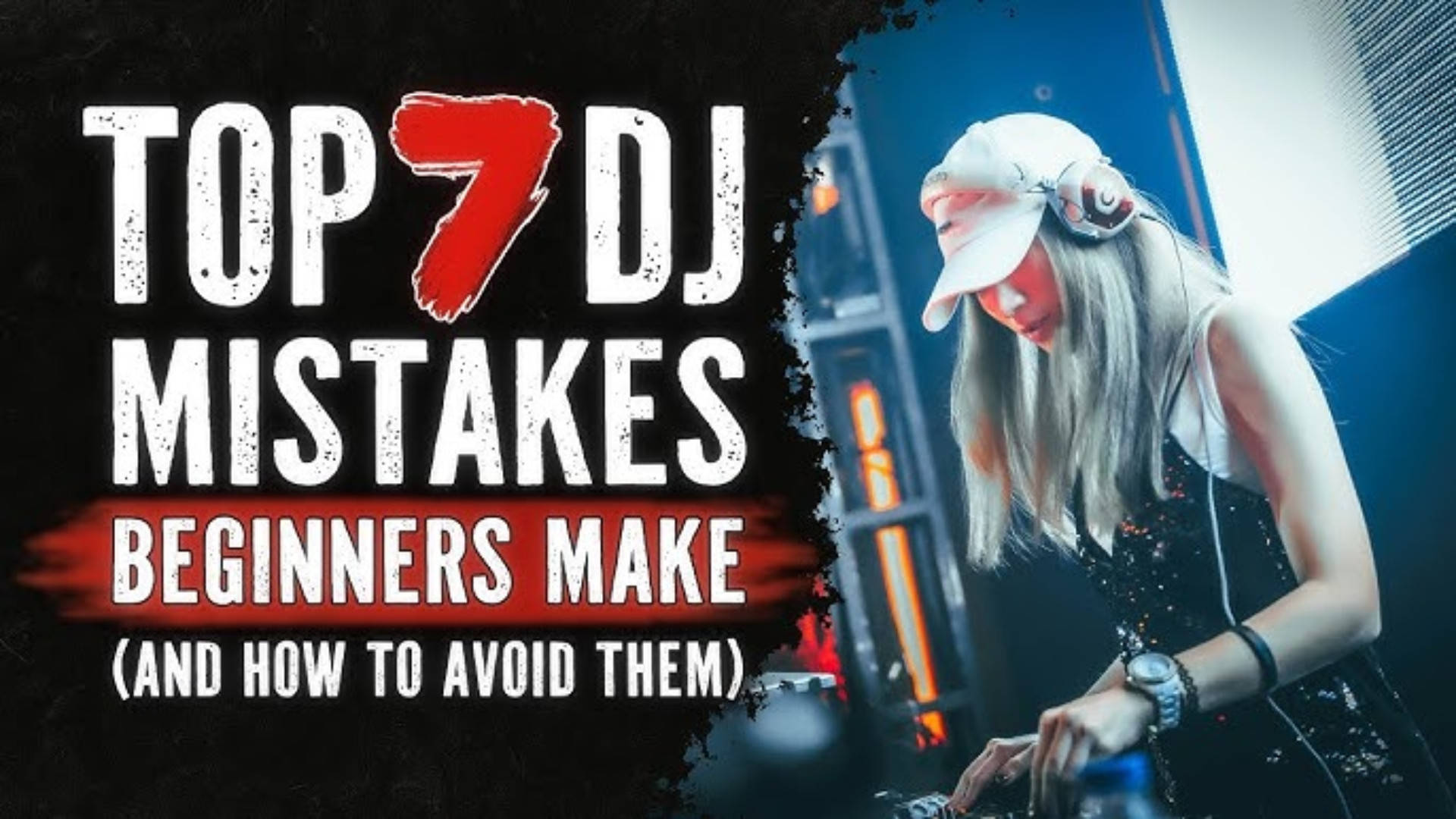
7 Common Beginner DJ Mistakes (and How to Fix Them)
By: Andrew Duffield - November 17, 2025
If you're just getting started with DJing and running into problems on the decks - whether it's messy transitions, clashing vocals, or energy dips on the dance floor - chances are, it's one of the mistakes we're going to talk about today.
I've been teaching DJs for over a decade, and I can tell you this: every great DJ has made these same mistakes at some point. The good news? Once you know what they are (and how to fix them), you'll start sounding cleaner, more confident, and more professional in no time.
So let's dive in.
1. Overusing Effects
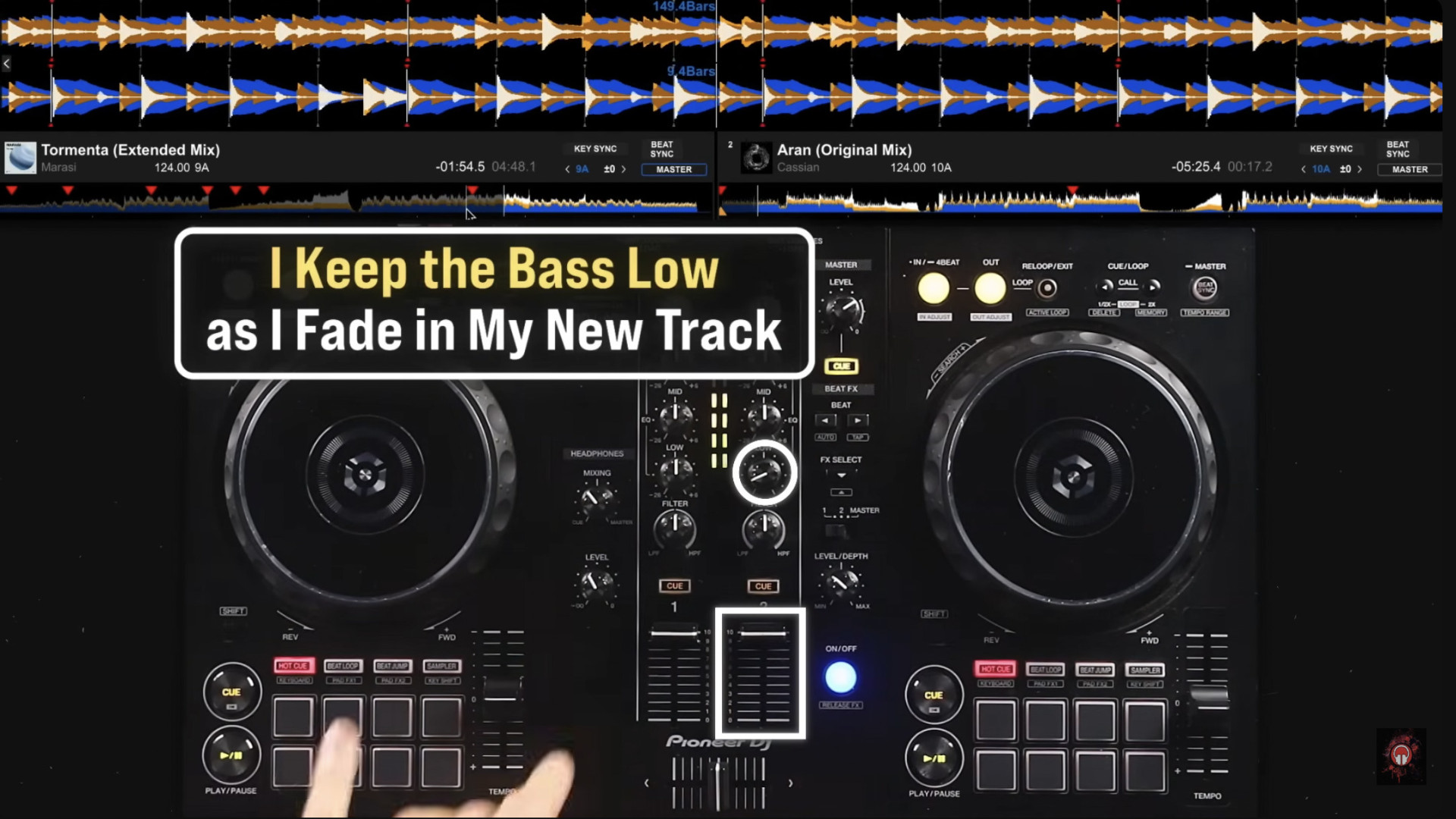
One of the most common things I see beginners do is go absolutely wild with the effects section. It's often the first thing new DJs reach for, twisting knobs and triggering echos like they're remixing a remix.
Here's the truth: if a track actually sounded better with constant effects, the producer would've made it that way. Your job as a DJ isn't to rewrite the song - it's to enhance it, respect its flow, and make your transitions sound musical and intentional.
Think of effects like icing on a cake. Before you worry about the icing, you've got to get the cake itself right - clean phrasing, tight EQ work, and smooth transitions.
When you start experimenting with effects, keep them subtle. Try adding a little filter or a light echo on the outgoingtrack, especially around the transition point. That's where effects shine - when they add depth and texture without hijacking the mix.
You'll notice that the pros use effects sparingly. Their timing is precise. It's never random; it's always in sync with the phrasing and energy of the track.
Here's the mindset shift: effects should support the mix, not become the mix. When you keep them low in the mix and use them purposefully, they enhance the flow and create a sense of movement rather than chaos.
2. Mixing at Random Points
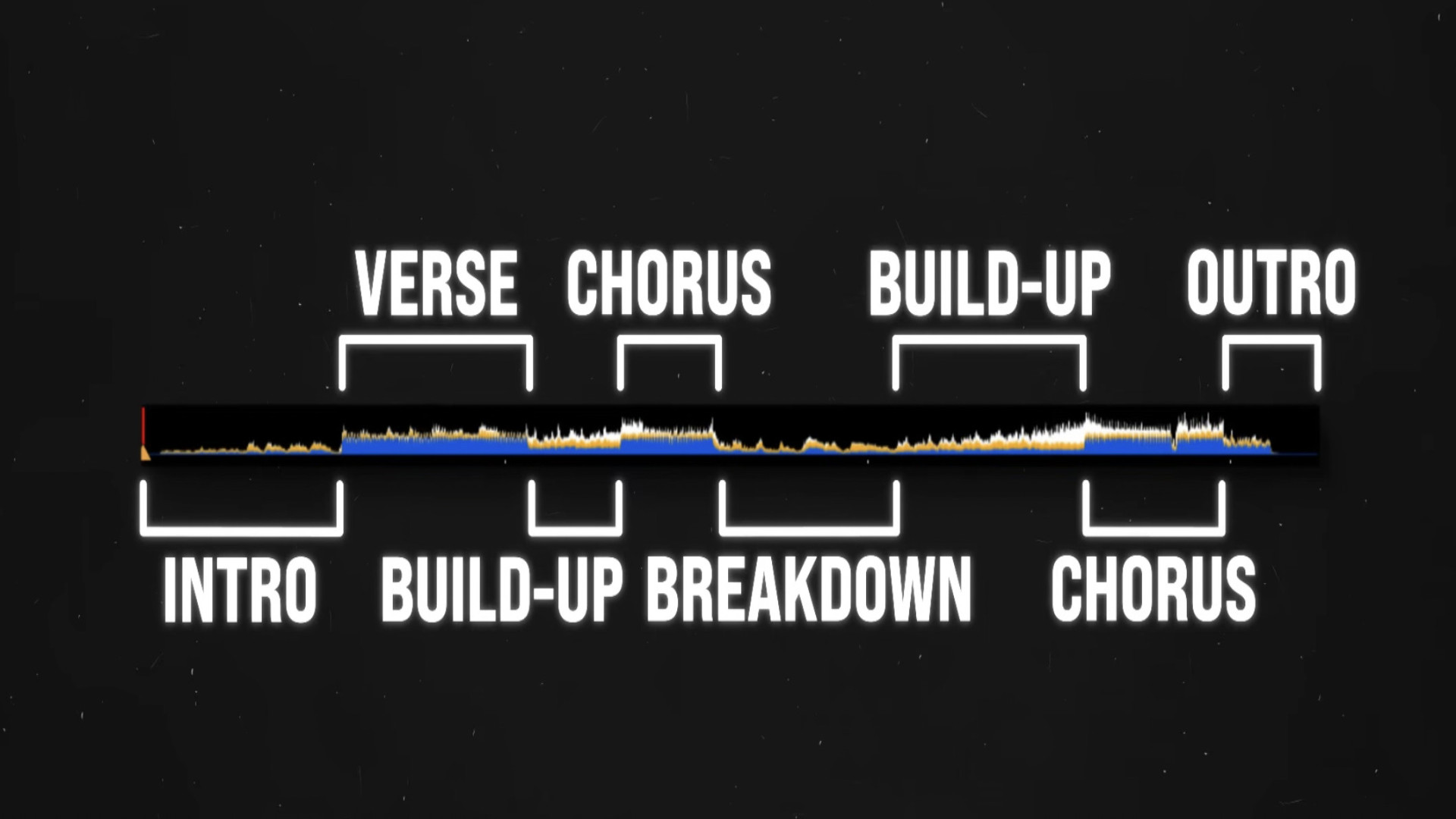
Another big one: beginners often just hit play and start mixing wherever. But songs aren't random. They follow a structure - intro, verse, chorus, breakdown, buildup, drop, outro.
Each of these sections plays a role in the story of the song. If you cut them off at the wrong time, you interrupt that story.
Imagine you're on the dance floor, loving the chorus, hands in the air - and suddenly the DJ slams an intro from another track halfway through. The energy just dies.
That's what happens when you don't respect the phrasing and flow.
A good DJ reads the shape of the song. When a track builds up, they don't suddenly bring in something low-energy. If a track is at its peak, they'll either complement that with another drop (a "double drop") or let it breathe and blend into an outro.
A great place to start? Try mixing after the final chorus, blending the outro of one track with the intro of the next. It's clean, it sounds natural, and it lets both songs breathe.
Once you're comfortable, experiment with transitions in the middle of tracks - for example, matching the verse of one song with the verse of another. As long as the energy flow matches, it'll sound musical.
The key takeaway: match sections that make sense together. Intros with outros, verses with verses, drops with drops. That's how you maintain energy and keep your audience locked in.
3. Letting Elements Clash
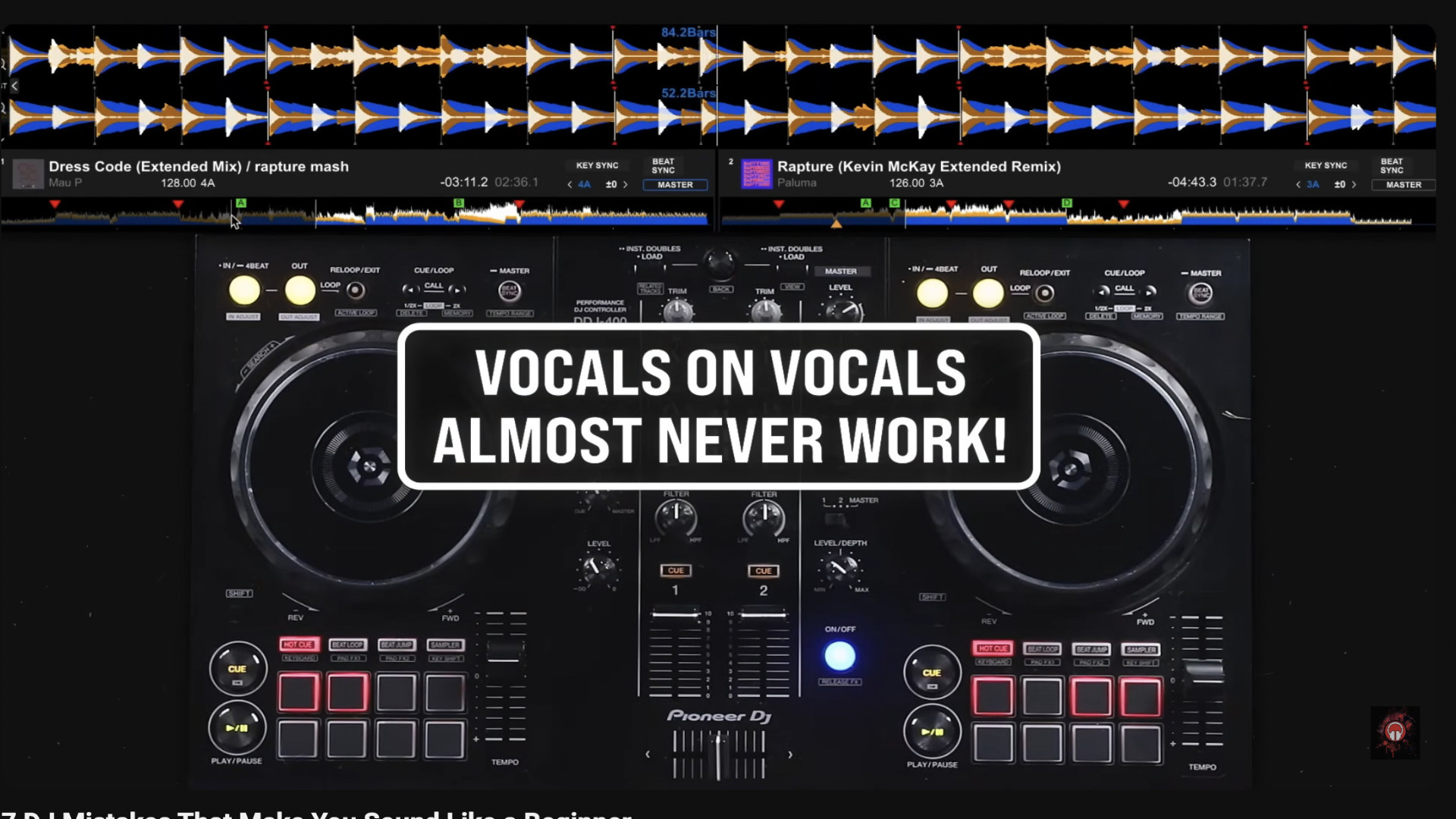
Even when your timing is right, you've got to be careful with what elements are playing at the same time.
When two tracks both have full vocals, heavy drops, or too much percussion, it can sound messy fast. You'll get that "wall of noise" feeling - where everything is competing for attention instead of working together.
Think of it like this: every track needs space to shine. Your job as a DJ is to decide which song is in the spotlight and which one is supporting it.
If you're doing a double drop, make sure one track has space - maybe a simpler instrumental, or at least no vocals. Or if you've got vocals clashing, try EQing one song's mids down slightly to make room for the other.
Look for sections in your tracks that "breathe." Often there's a 16-bar breakdown or instrumental section where you can bring in a new song smoothly. These moments are gold for transitions because they give your mix room to evolve without overwhelming the listener.
And always remember: silence and space are as musical as sound.
4. Not Understanding Phrasing
If there's one concept that separates amateur DJs from confident performers, it's phrasing.
Phrasing is the musical structure of a track - the way beats are grouped into bars, and bars are grouped into phrases. Most electronic and dance tracks are structured in 4-bar or 8-bar phrases, meaning something new happens every 8 or 16 beats - a vocal starts, a snare comes in, a bassline drops, etc.
When you mix, you want those changes to happen together. If Track A's new section hits at the same time as Track B's, the mix feels natural and professional. If they're out of sync, it feels messy and unpredictable.
Here's a simple way to practice:
- Count "1-2-3-4" with each beat.
- Notice when something changes - that's usually the start of a new phrase.
- When you mix in your next track, make sure its new section hits at the same time.
But here's the real secret - you don't want to live counting in your head. You want to feel phrasing. It becomes instinctual over time, especially with practice.
In my Club Ready DJ Course, I built drills that condition phrasing so you no longer need to count. You'll just know when to mix because you'll feel the change before it happens. That's when DJing starts to feel like a dance between you and the music, not math homework.
5. Poor EQ and Gain Control
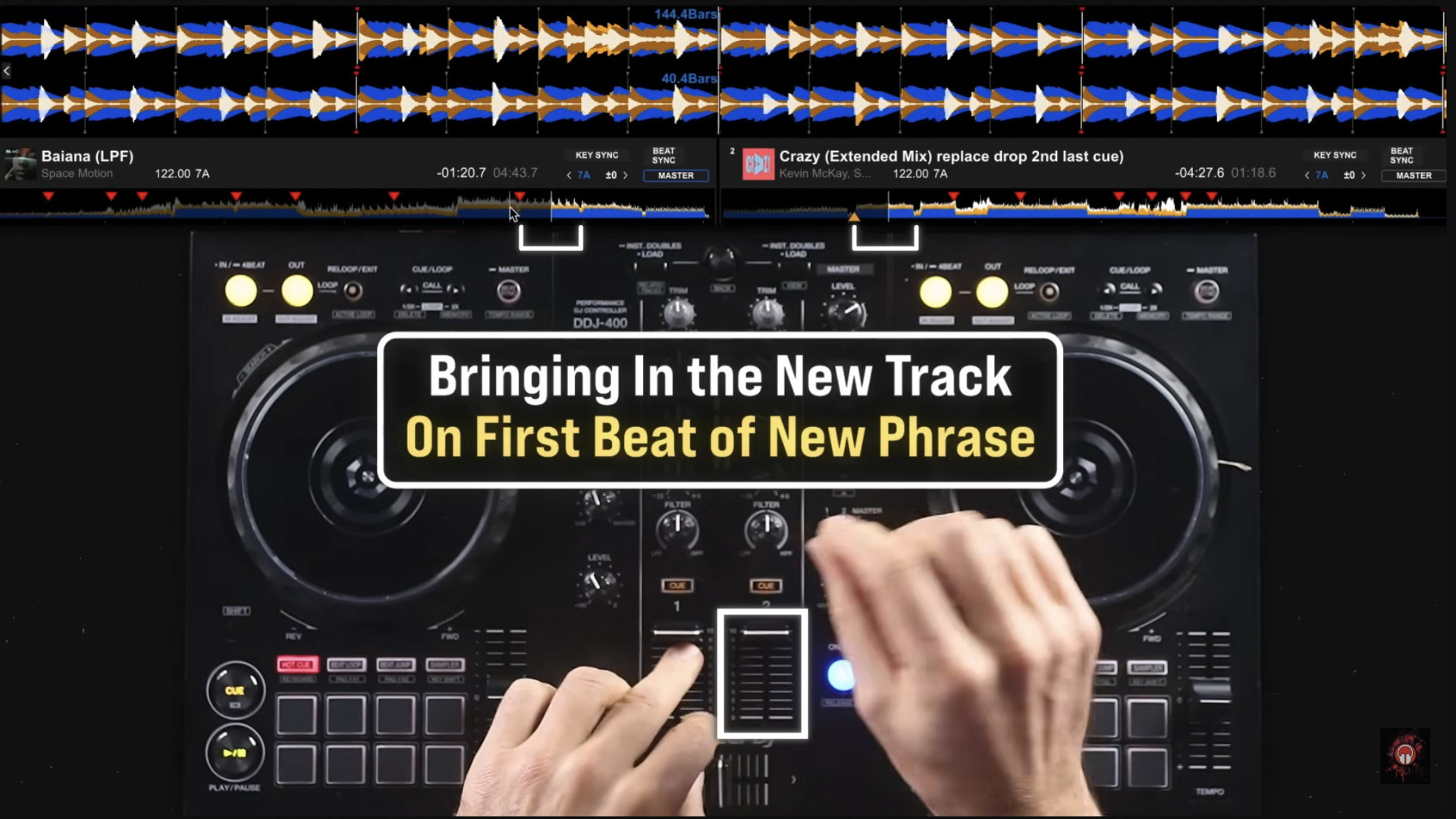
Your EQ and trim controls can make or break your mix.
Let's start with EQ. The bass knob controls the low frequencies, the mids handle vocals and melodies, and the highs bring out the top-end sparkle.
When mixing two songs together, don't leave both basses up. On small speakers, you might not notice much, but the moment you play on a club system with subs, it'll sound like a muddy explosion.
Instead, lower the bass on your incoming track while it's being introduced. When you're ready for the handover - ideally at the start of a new phrase - swap the basses: bring the new one up and the old one down.
That simple habit will instantly clean up your transitions and make you sound pro.
Now let's talk about gain (also called trims). These are the small knobs at the top of your mixer channels that control how loud your signal is.
If your tracks are from reliable sources like Beatport, you can often leave the trims at noon because most songs are mastered to similar loudness levels. But if you're using tracks ripped from YouTube or older files, you may need to adjust them.
Your goal: keep your levels just below the red.
Redlining - where your meters go deep into the red - causes distortion, both through the speakers and in your recordings. Once the signal clips, no amount of mastering can save it.
So remember: green and yellow are clean, red is dead.
6. Not Reading the Crowd
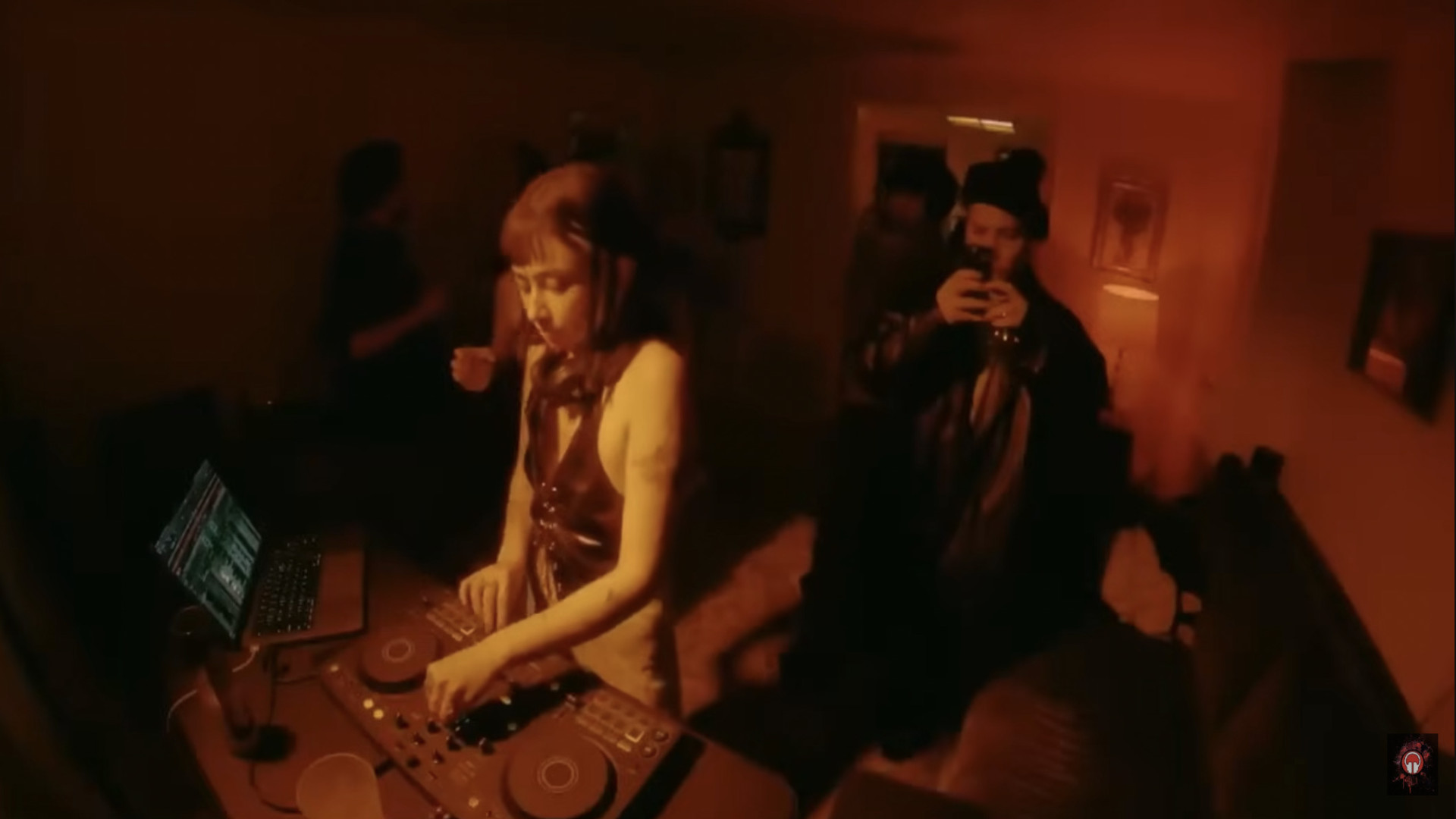
This one's huge.
You can have the best transitions, flawless phrasing, and perfect EQ - but if you're not connecting with the crowd, you're missing the point.
DJing isn't about showing off your playlist; it's about creating an experience for the people in front of you.
Let's say you've prepared a killer Afro House set. You drop your first few tracks, but the crowd doesn't bite. Instead of doubling down, pivot. Try some tech house, or maybe a commercial anthem to win them over, then gradually guide them back to your preferred sound.
The best DJs can shift gears without losing their identity.
Preparation helps here. Create multiple playlists - not just by genre, but by vibe. Have one for "peak energy," one for "warm-up," one for "after-hours," etc. That way, whatever the crowd throws at you, you've got options.
And always stay observant. Look up from the decks. Feel the energy. See what's landing and what's not.
Confidence doesn't come from sticking to your plan - it comes from being flexible enough to handle anything the night gives you.
7. Not Knowing Your Gear
The final (and often most overlooked) mistake is not knowing your equipment well enough to troubleshoot under pressure.
I've seen DJs panic mid-set because they've lost sound or hit the wrong button and frozen up. And that panic energy? The crowd feels it instantly.
Here are some basics every DJ should know:
- No sound? Check your channel faders, master volume, and filters. Sometimes it's as simple as a filter left on by the previous DJ. Tracks not syncing? Maybe you've accidentally turned off quantize or changed the tempo range.
- Distortion? You're probably in the red - pull back your gains.
And if you're relying solely on the sync button, that's a red flag. Learn to beatmatch by ear. Not because you'll always need to do it, but because understanding it gives you full control.
When you know your gear deeply, it becomes an extension of you. You move with confidence. You can adapt. That's when the magic happens.
8. Forgetting Stage Presence
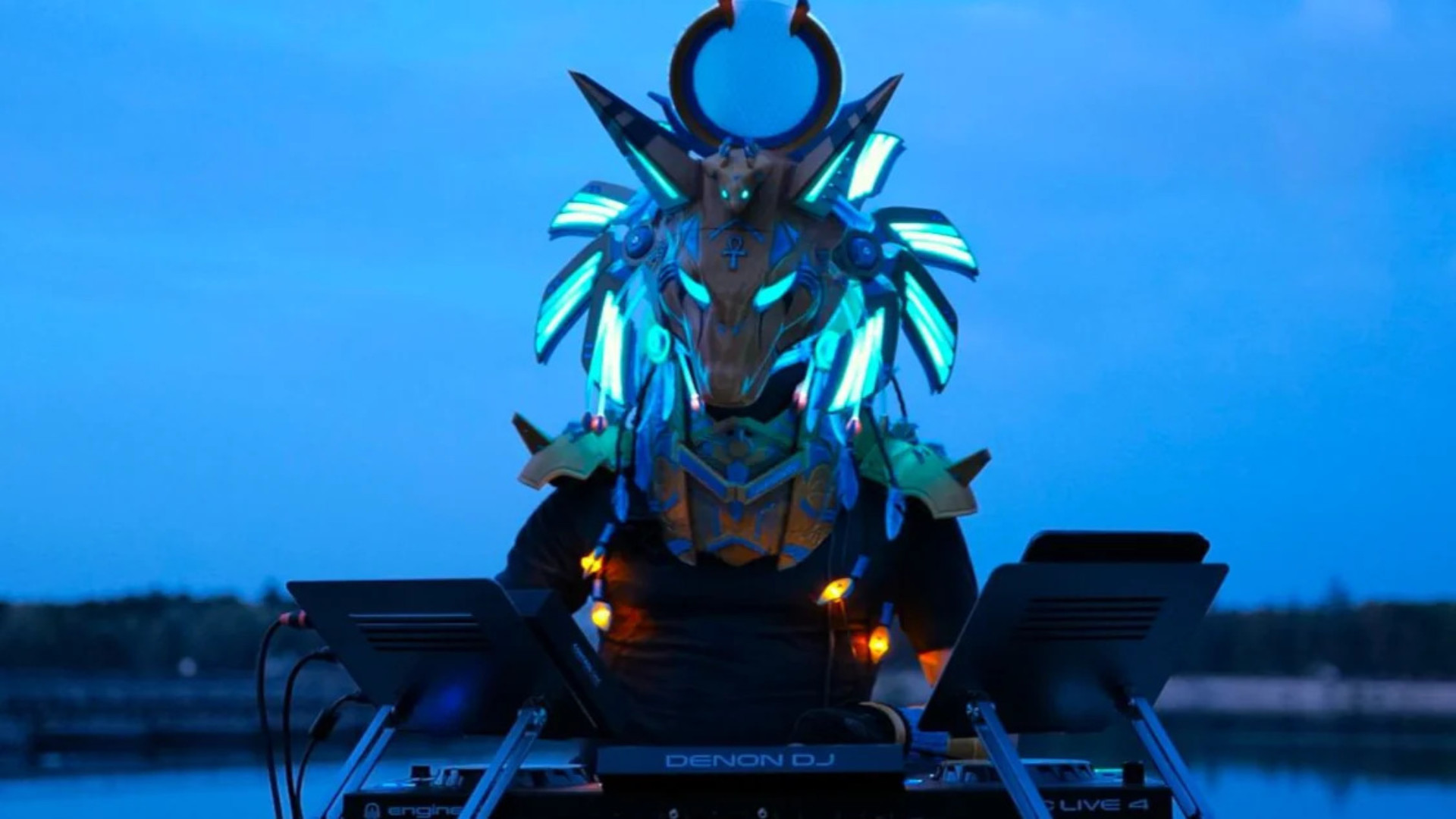
There's a quote I love: "An ounce of image is worth a pound of performance."
When you're behind the decks, your energy is contagious. If you're standing still, staring down at your laptop, people feel disconnected. But when you move, smile, and interact with the room, everything changes.
You don't need to be over-the-top or theatrical. Just be present. Feel the music. Let your body move naturally. Make eye contact. Raise your hands.
You set the tone. If you look like you're having the time of your life, the crowd will follow your lead.
I remember once I bought an online piano course - not for the lessons, but because the teacher's energy was magnetic. DJing works the same way. People are drawn to authenticity, to the feeling that you love what you're doing.
So own it. Be proud. You are the vibe.
Final Thoughts
There you have it - the top beginner DJ mistakes and how to fix them.
And here's the thing: every DJ has been there. Every "bad mix," every awkward moment, every redlined set - it's all part of the process.
Mastery isn't about never making mistakes. It's about learning from them, refining your craft, and growing your confidence.
Repetition builds rhythm. Rhythm builds confidence. And confidence builds great DJs.
If you're ready to level up - to go from bedroom DJ to someone who can play any gear, any genre, anywhere - check out my Club Ready DJ Course. It's the course I wish I had when I started. It's helped thousands of DJs around the world find their sound, build confidence, and start playing live with ease.
You've got the passion. Now get the tools to match.
Let's make you club ready.
Black Friday Deal
The Club Ready DJ Course, currently available for $175 during the Black Friday sale, offers a comprehensive and structured learning experience for aspiring and intermediate DJs. This limited-time offer provides significant savings, as the complete package is typically valued much higher, with individual components like the Club Ready DJ Course, Advanced Performance Pack, and Club Pack each costing more when purchased separately. The course is designed to take students from beginner to confident performers, covering everything from foundational mixing techniques to advanced performance skills and industry insights.
The program includes over 15 hours of beginner content, 22 hours of advanced material, and additional specialized courses, totaling a vast amount of learning material. Key benefits of enrolling now include lifetime access to all course content, ensuring you can revisit and refine your skills at your own pace. The curriculum is meticulously organized, following a proven sequence that prevents frustration and accelerates learning, unlike piecemeal YouTube tutorials. Furthermore, the Black Friday deal secures early access to the new "Follow-Along Playlists & Transitions Course" launching January 14th, adding even more value. The course also boasts a strong online community, direct access to the instructor for feedback on mixes, and a full year money-back guarantee, making it a risk-free investment in your DJing journey.
RELATED POSTS
It's that time of year when everyone's doing sales and I just thought I'd do an article answering any questions you may have about the course and discuss wether you think it's a good fit for you.
So many people when they first learn to DJ make it unnecessarily hard for themselves and as a result they get frustrated, lose interest or simply give up. WHEN REALLY all they had to do is follow the tips I'm going to share in this video.
n the exciting world of electronic music, being a skilled DJ is one aspect of this industry, and it only scratches the surface of just how far you can take this as a career. Aspiring DJs are increasingly venturing into the realm of music production, where they can elevate their skill set and potential to make it big in the dance music scene, pushing them to heights that DJing alone may never get them. Embarking on the journey of music production opens up a world of infinite possibilities, allowing DJs to truly explore and craft their own unique sound and overall brand. Finding your niche as a producer and being a great DJ to match is a combination that carries great potential and is possibly the only way to make a name on the world stage.
Ready to get started on your DJ setup? Love being at a club event, rave, concert, or festival and want to create that atmosphere for others? Want to ignite your inner talent to mix music as a DJ?
Not yet part of the Club Ready Tribe? Sign up to become a student today and join the strongest DJ community in the world!!
DRUM ROLL... GET THE COMPLETE PACKAGE
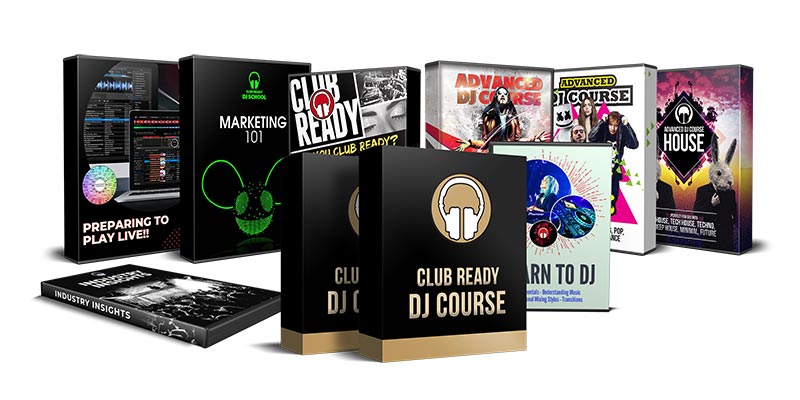
Buy all the courses and get over 60% off
For a limited time
CLUB READY DJ COURSE: Value: $295
ADVANCED PERFORMANCE PACK: Value: $395
CLUB PACK: Value: $195
ONE TIME BONUS VIDEOS: Value: $75
BONUS CONTROLLER TO CLUB MINI COURSE: Value: $95
FEEDBACK ON MIXES: Value: $45
MEMBER ACCESS TO CLUB READY TRIBE
DIRECT ACCESS TO ME
TOTAL VALUE: $1295
TOTAL VALUE OF COMPLETE PACKAGE: $1295
>> SALE PRICE: $175 BLACK FRIDAY DEAL <<
YES! I WANT ALL THIS FOR ONLY $175And I want to be on time for the reduced price!

If you press the button and see the price went back to $1295 it means the promotion has ended and the program is back to its regular price.
This price is a ONE-TIME-ONLY payment and you get to keep the program FOR LIFE.

16 MINI DJ LESSONS FOR FREE!
Not sure where to start? In this mini series I answer many of the questions beginners have about learning to DJ.
CLUB READY DJ COURSE
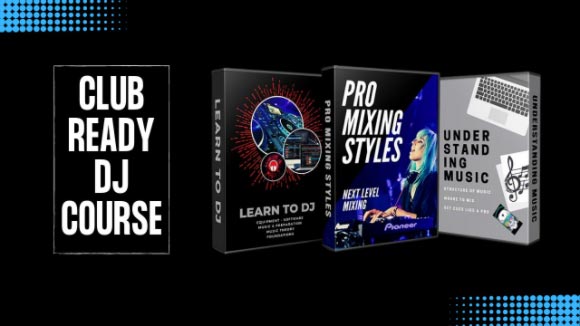 Usually
Usually ADVANCED PERFORMANCE PACK
 Usually
Usually CLUB PACK
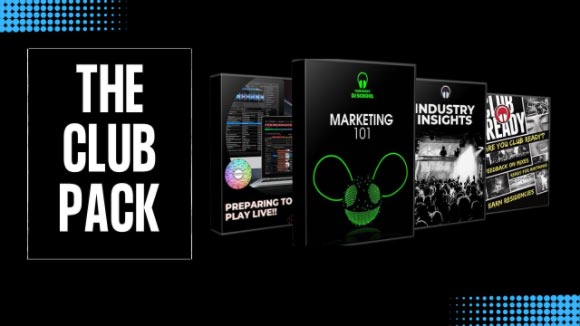 Usually
Usually THE COMPLETE PACKAGE
Get all of my courses for life!
 TOTAL VALUE:
TOTAL VALUE: 
